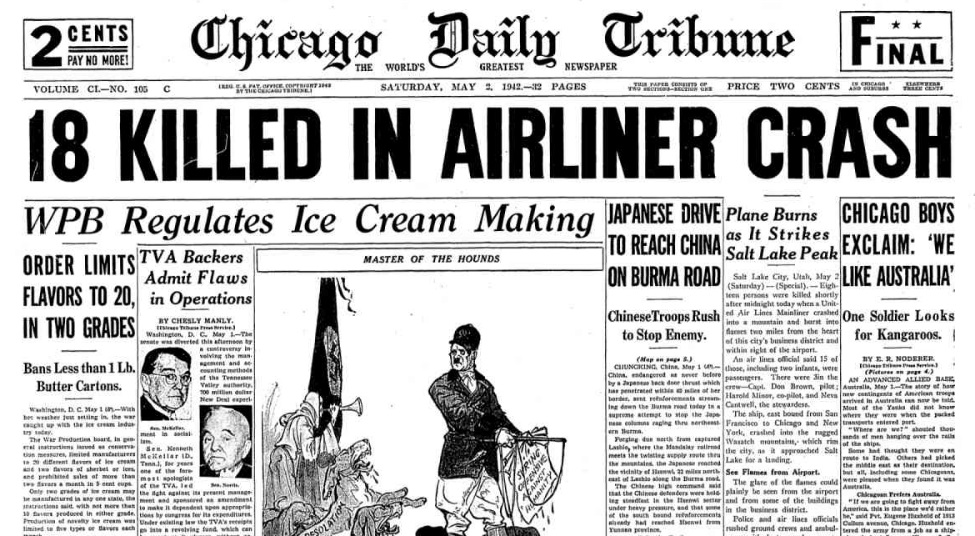During World War II, the War Production Board (WPB) had sweeping powers to control the U.S. economy. The idea was to make sure that U.S. industry was geared up as completely as possible for war production, and no industry was exempt.
In many cases, such as in the radio industry, the restrictions, while draconian, at least made a certain amount of sense. For example, the production of civilian radio receivers was banned during the war, so that the entire output of U.S. electronics factories could be devoted to the war effort.
But it also appears clear that there was a desire to regulate simply for the sake of regulating. As we previously reported, the sale of sliced bread was banned for a time, until consumer objections caused the WPB to relent.
And just like bread, ice cream went to war. 75 years ago today, the May 2, 1942, issue of the Chicago Tribune shown here shows how the dairy industry was affected. Cardboard packaging was not allowed for butter packages of less than a pound. But as the headline notes, the most noticeable regulation related to ice cream.
For the duration of the war, ice cream manufacturers were limited to twenty (20) flavors. Similar restrictions were imposed on ice cream novelty items.
Probably more significant for the manufacturers was the requirement that distribution could be made only by common carriers. In other words, the manufacturer was prohibited from running its own fleet of trucks.


